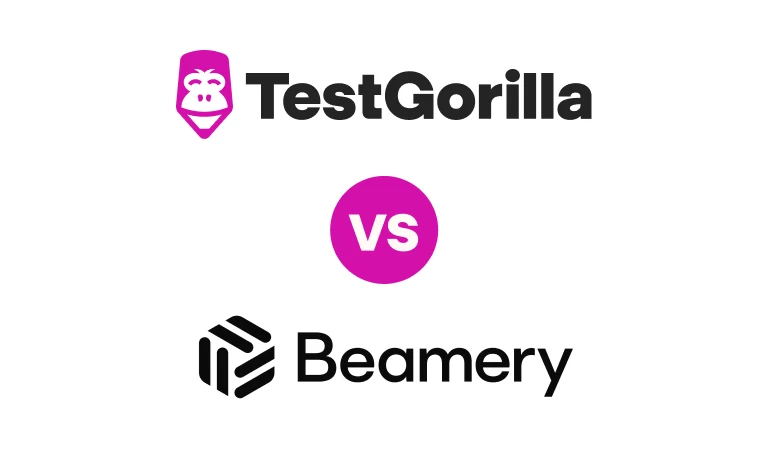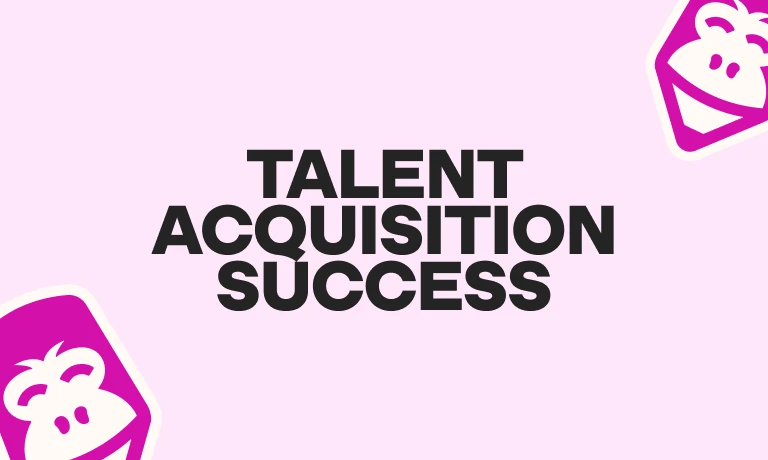Organizational culture (also referred to as company culture) is the shared values, beliefs, attitudes, behaviors within an organization. Company culture affects employee satisfaction significantly. In the US, according to a Glassdoor study from 2019, company culture is the #1 factor impacting job satisfaction for 22% of workers. In the second and third place come senior management and career opportunities (21% and 19%, respectively), while compensation and benefits come 6th. So how can you conduct a cultural assessment and ensure that you’re creating a strong culture at your company?
Graham, John. R et al. “Corporate Culture: Evidence from the Field.” Duke’s Fuqua School of Business. March 2, 2017.
In this article, we’ll look into the details of what organizational culture is, how to perform a cultural assessment, and what tools and strategies to use to create and cultivate a strong culture.
What is organizational culture?
Organizational culture is an elusive concept. There are many definitions of what organizational culture is and isn’t, and every company enacts their own understanding of what company culture is through their core values, whether or not they’re explicitly defined and stated.
Organizational culture defines the values your leaders and employees share, and the way these values are enacted, both in their day-to-day work and on a higher level. To assess your real company culture, and compare it against your ideal company culture, you need to perform a culture assessment.
So, what is a culture assessment?
Culture assessment means evaluating team and individual actions, attitudes, beliefs, behaviors, expectations, and experiences at your company, in order to determine whether they’re in line with your stated values.
How do you perform a culture assessment?
There are many different methods and models, but, in general, a cultural assessment should take the following factors into account:
Your vision and mission: What are the mission and vision that lie at the core of your organization?
Flexibility vs. control: Are you concerned about doing things right each time? Is the speed of reaction more important than perfection? How independent can people be in taking decisions?
Outcomes, success, and achievements: How is success understood and measured? What are the desired outcomes?
Hierarchy: Is your organization highly hierarchical? Is it acceptable to challenge authority? Is your hierarchical structure horizontal or vertical?
Degree of urgency and speed of reaction: Is speed a top priority? How fast do you expect to innovate, make decisions and to tackle different projects?
Collaboration: Are you looking to always involve everyone, or would you rather have people move fast and work independently?
Processes vs. people: Do you put people first and trust their decisions, or do you expect everyone to follow pre-set processes and procedures? Or a mix of both?
The answers to these questions have a profound impact on the way your organization functions. You could also expand the list of topics to other areas that are important for your company. Another key element to consider is adding a cultural assessment during your hiring process.
The goal of performing a culture assessment is to see where you’re currently standing, so that you can define how you’d like your company culture to evolve. Additionally, it’ll allow you to detect eventual problem areas and help you address issues.
You can’t artificially create a specific type of company culture you’d like your organization to have. Company culture is much more about what you do and the way you act than it is about a series of principles you lay out in a document. Acting with integrity, according to the image you’re projecting both to the outside world and to your employees, is crucial.
The best insights on HR and recruitment, delivered to your inbox.
Biweekly updates. No spam. Unsubscribe any time.
What are the best tools and strategies for cultivating a strong organizational culture?
In this section, we’ll look at the key tools and strategies you can use to build a strong organizational culture and support your company’s growth based on the results of your cultural assessment.
1. Be intentional about your company culture
A joint effort of the HR department and leadership is necessary to build a strong organizational culture, and it all begins with being intentional about it. Define what you’d like your company culture to be like, and set up the tools and processes to support this. Assess where you’re standing at the moment with the help of a cultural assessment.
Every company is different and you cannot simply use existing processes and templates. You need to define your “why” (i.e. your core mission) and expand from there, with an ongoing cultural assessment.
Since your organizational culture will evolve and grow with you, and that you cannot simply assess and define it once and be done with it. Building an organizational culture that supports your growth is a continuous process, and you need to always keep it high on your list of priorities. For this, you need to perform regular culture assessments, and adapt your strategy to the results.
2. Involve your employees
Your employees’ feedback is critical to performing a thorough cultural assessment. Throughout the process of defining your organizational culture, you need to involve your employees, first by assessing the way they understand it and then also by collecting feedback on what’s working well and on what could be improved. Supporting the growth of your employees, investing in their well-being, and creating an inclusive workspace environment is impossible without actually speaking to them and defining together the axes of improvement.
By giving your employees a say in how things get done, and being receptive to their feedback, you’re communicating an important message: that they matter. This is crucial for retaining your best employees, attracting top talent, and building a strong employer brand image.
3. Create a hiring process to support your company culture
The employee journey starts with the hiring process. For your company culture, this means two things:
Your hiring process itself needs to support your values and brand image
You need to hire for culture add (as opposed to culture fit).
Simply hiring for a culture fit means hiring people who seem like they will instantly fit in. While this is tempting, it’ll probably also mean that you’ll be hiring based on your gut feeling, and, let’s face it, “gut feeling” is simply a nicer way to say “unconscious bias”.
Besides, by hiring for culture fit, you’re actually not hiring for diversity and inclusion, but are, instead, looking to hire people who are like you. Of course, you still need to assess how your candidates’ values, behavior, and personality align with your company culture, and whether they’ll make a good culture add. This brings us to the next point:
4. Include a cultural assessment test as part of your hiring process
A culture add test allows you to see how prospective employees’ core values align with the values of your organization, and whether they’ll be the right hire for a specific position.
For this, you can use TestGorilla’s cultural assessment test for job candidates. You’ll first need to fill out a customized survey to define what your company culture is like, and the qualities and behaviors that would make your ideal applicant successful in a specific role. You can use it to hire for all roles, regardless of your company size.
5. Have a well-defined onboarding process
Your onboarding process is a critical component of how your employees see your company and lays out the foundations for creating a common understanding of your shared values and principles.
It’s your first and most important opportunity to communicate your company values clearly, to define what success looks like for each role, and to provide sufficient guidance to new employees in order to include them in the already existing social networks at your organization. For this, you need to make sure everyone has equal access to the resources and information they need in order to perform well.
Onboarding is not the same thing as orientation, although many confuse the two. Orientation is the initial stage of the onboarding process, where you simply complete paperwork and explain the basics. Onboarding is a comprehensive process that can take up to 12 months for more senior roles, and it has a direct impact on employee engagement, productivity, and performance.
6. Define how you measure and reward performance
Create a clear definition of what success looks like for different roles in your company and set transparent criteria on how you’ll measure it. This creates a sense of trust and transparency, which are both major components of a strong organizational culture.
For this, you need to define:
The key performance metrics and indicators for each role
How you’ll measure these
How often you’ll assess them and provide feedback
What happens when they’re achieved (or if they aren’t)
How employees can deal with roadblocks and obstacles
Be transparent when assessing the performance of your employees, and give clear and detailed feedback that will allow them to be more efficient and achieve better results.
Make sure the goals you set are realistic and achievable, or else you’re setting up your employees for disappointment and bitterness. Keep in mind that this shouldn’t be a one-way process: check in with employees to see how they’re doing, and whether you could do anything to help them be more productive.
7. Invest in your employees’ well-being
Yearly or quarterly team building activities can only get you so far, and virtual team building can feel agonizing, according to Zaria Gorvett for the BBC. Investing into your employees’ well-being will inevitably improve team cohesion, too, and communication is crucial for that. Team building events should never be mandatory or replace actually caring for your employees’ well-being.
Check with your employees what they need most. Is it assistance with finding adequate childcare? Is it a better healthcare plan? Maybe one that has comprehensive mental health coverage? (Of course, those are sensitive topics; you might want to use anonymized surveys for that.) Would they be more productive on a more flexible schedule? Do they have adequate home office equipment? There are plenty of things that you could do to improve your employees’ well-being and working conditions, and they go beyond just compensation.
8. Define the right communication strategies
Communication is an essential part of organizational culture.
It has many aspects, such as:
How you’re communicating key messages. If the key messages about your vision, future, and company culture are conflicting, this creates distrust and confusion.
How easy it is for employees to contact the company’s leadership. A leadership team that’s available and open to discussion will help you improve your processes and retain your best employees.
What communication within and between different teams looks like. If someone is stuck, who can they ask for help in their team? Are team leads sufficiently present and engaged? How do different teams stay in touch?
Whether you’re proactively collecting feedback—and actually doing something about it. Feedback is essential to moving forward, but it’s not only about administering a quick survey every now and then. Be prepared to listen to criticism, and do something about it.
Make regular check-ins a part of your communication process, especially if some or most of your employees work remotely, but be mindful of the fact that not everyone has the same communication needs.
Frequent video calls are a great tool for staying in touch, but they might feel stressful and disruptive for some of your employees (similarly to endless office meetings), so take this into consideration, as well.
9. Use the right software
There are several software tools that can help you build a strong company culture. Let’s look at some of them:
TestGorilla: TestGorilla helps you hire for skills and knowledge, instead of for diplomas or previous jobs. With our talent assessment tests, you can assess your applicants’
Culture add potential
Personality, with the Big 5 (OCEAN), 16 personalities test, or DISC test, for example
Cognitive ability, such as reading comprehension or problem-solving skills.
Culture Amp: Culture Amp helps you measure employee engagement, take actionable steps to improve it, and collect feedback. You can also administer automated surveys during your onboarding process, when someone gets a promotion, or when someone leaves the company.
Simple Poll for Slack: Simple Poll allows you to collect employee feedback in Slack, and anonymize it, if necessary. You can ask your team anything: from when they’re available for another team call, to what obstacles they’re currently facing. You’ll have to define your own questions: Simple Poll doesn’t come with preset content.
Officevibe: Officevibe gives you the possibility to collect anonymous feedback from your team on a regular basis, to get the pulse of your workplace and improve engagement.
Of course, you can also use anonymous Google Forms to create surveys for your company, or structure feedback collection differently, for example by scheduling monthly or quarterly 1:1 meetings. A mix of both will allow you to detect issues that might remain invisible if you’re using either one.
These tools will help you assess your company culture, and define how you’d like it to evolve.
A strong company culture will help your organization grow and thrive—but you need to nurture it
Your organizational culture is the soul of your company, and what makes you unique. According to SHRM, a toxic culture can lead to a drop in performance, lower employee retention rates, and a decrease in profits. Fostering a positive company culture will help you be more competitive, retain and attract the best talent, and create an inclusive workspace environment. To create a strong organizational culture, you need to be intentional about it, perform regular cultural assessments, ask your employees for feedback and involve them in defining and shaping the company culture.
Related posts
You've scrolled this far
Why not try TestGorilla for free, and see what happens when you put skills first.



















